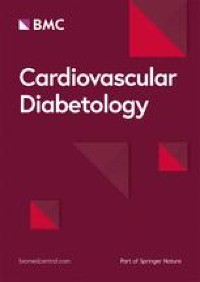Cardiovascular
Long-term cardiovascular outcomes of biodegradable polymer drug eluting stents in patients with diabetes versus non-diabetes mellitus: a meta-analysis
Search databases
Cochrane central, MEDLINE (Subset PubMed), EMBASE, Web of Science, http://www.ClinicalTrials.gov and Google scholar were searched for relevant publications involving BP-DES in patients with DM versus non-DM.
Search strategies
The above mentioned databases were searched for relevant publications using the following search terms: ‘biodegradable polymer drug eluting stents and diabetes mellitus’, ‘biodegradable polymer DES and diabetes mellitus’, ‘biodegradable polymer drug eluting stents and DM’.
After going through the relevant publications, their reference lists were also searched for suitable publications.
This meta-analysis was performed in accordance with the Preferred Reporting Items in Systematic reviews and Meta-Analyses (PRISMA) guideline.
Inclusion and exclusion criteria
The following inclusion and exclusion criteria were considered:
-
(a)
Inclusion criteria:
-
(b)
Exclusion criteria:
-
Systematic reviews, meta-analyses and literature reviews;
-
Studies which were not based on patients with DM;
-
Studies that did not include a comparison of biodegradable polymer DES between DM and non-DM;
-
Studies that did not report adverse cardiovascular outcomes as the endpoints;
-
Duplicated studies or studies which were based on the same trial.
Outcomes and the duration of follow-up time period
The outcomes which were reported in the original studies have been listed in Table 1. The follow up time period of each studies has been listed in the same table.
The endpoints which have been assessed in this analysis were:
-
(a)
Major adverse cardiac events (MACEs) consisting of a combination of all-cause mortality, myocardial infarction and revascularization;
-
(b)
All-cause mortality;
-
(c)
Cardiac death;
-
(d)
Myocardial infarction (MI);
-
(e)
Definite and probable stent thrombosis;
-
(f)
Target vessel revascularization (TVR);
-
(g)
Target lesion revascularization (TLR);
-
(h)
Target lesion failure (TLF).
The duration of the follow-up time period ranged from 12 to 120 months (1–10 years).
Data extraction and quality assessment
The authors independently extracted data including the time period of participants’ enrollment, the type of study, the outcomes which were reported, the total number of events associated with each outcome, the type of biodegradable polymer, the total number of patients with DM and non-DM, the baseline features including the mean age, percentage of male patients, percentage of participants with hypertension, dyslipidemia and current smoker, the cardiovascular and antiplatelet drugs which were used as well as the angiographic features of the lesions including the percentage of patients with lesions in the left main coronary artery, left anterior descending artery, left circumflex and right coronary artery.
Any disagreement which occurred during this data extraction process was carefully discussed among the authors and if a decision could not be reached, the corresponding author was contacted and he was the one to make a final decision.
The methodological quality of the trials and observational studies was assessed by the recommendations of the Cochrane collaboration [24] and the Newcastle Ottawa Scale (NOS) [25] respectively.
Grades were allotted to denote a low, moderate or high risk of bias for the randomized trials, whereas a ‘star system’ was used to represent bias risk assessment for the observational studies (Table 2). This assessment of observational studies was based on the design of the respective study, content and ease of use directed to the task of incorporating the quality assessments on three broad perspectives: the selection of the study groups; the comparability of the groups; and the ascertainment of either the exposure or outcome of interest for case-control or cohort studies respectively. The higher the number of stars, the better the methodological quality of the study.
Statistical analysis
This is a meta-analysis, and the data analysis was carried out with the latest version of the RevMan software (version 5.4).
Studies which have been included in this analysis will differ from each other. Any kind of variability among studies in a meta-analysis is termed heterogeneity.
Two simple statistic test were used to assess heterogeneity among the subgroups: (1) the Q statistic test whereby a P value less or equal to 0.05 associated with a particular subgroup was considered statistically significant, (2) the I2 statistic test whereby heterogeneity decreased with a decreased I2 value. For a subset having an I2 value less than 50%, a fixed effect statistical model was used, whereas for a subset having an I2 value above 50%, a random effect statistical model was used.
Based on the Mantel-Haenszel test, risk ratios (RR) with 95% confidence intervals (CI) were calculated and used to represent the results following analysis.
Sensitivity analysis was also carried out. Sensitivity analysis was conducted to countercheck whether the final result was influenced by one particular study. This sensitivity analysis was carried out by an exclusion method whereby among all the studies which were involved with one particular outcome, each study was excluded one by one, and a new analysis was carried out each time and compared with the main analytical result.
Publication bias was also assessed through funnel plots.
Ethical approval
An ethical approval or board review approval was not required for this study since data were obtained from previously published original studies, and no experiment on animals or humans was carried out by any of the authors.

